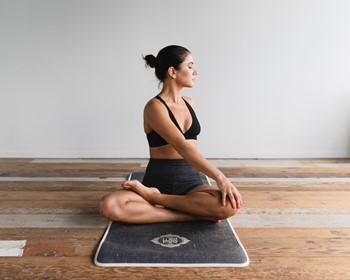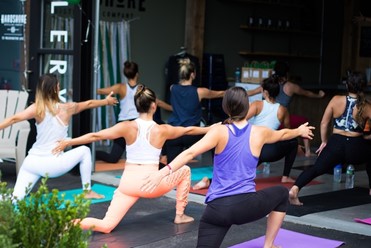Justin Tuohey is a fitness professional who teaches his clients the importance of proper healing, health, and yoga. In the following article, Justin Tuohey discusses how yoga poses can help promote holistic healing within the body (and mind).
The power of yoga is timeless.
Originally practiced primarily for meditation nearly 3,000 years ago, yoga’s mindfulness and wellness benefits have stood the test of time.
While still a mind-calming tool, scientific studies have long proven yoga’s connection to increased flexibility and strength, weight loss, and boosted energy.
Justin Tuohey explains that the many benefits of yoga run deep. For millions of global practitioners, yoga is a fundamental part of healing — mind, body, and soul.
Adaptability
One of the biggest reasons for yoga’s longtime popularity is how it can be adapted to people of all ages and to suit a wide variety of needs.
It can work, often in tandem with other therapeutic approaches, for everything from encouraging general relaxation to helping people bounce back strongly from injury explains Justin Tuohey.
Yoga’s power is hard to ignore, even in the context of advanced medical technology. Now, major hospitals integrate regular yoga into tailored treatment plans.
And it’s not just one’s physical health that improves through regular yoga.
Mental Recovery
Justin Tuohey reports that stress is an epidemic in America. Around 85% of adults in the U.S. say they feel the impact of long-term stress, according to the American Psychological Association.
Yoga is here to help. According to one national study, up to 80% of all cases in hospitals involve some aspect of stress or depression. Yoga may help people find the best path toward mental clarity and positive energy since it can release cortisol, a stress hormone, and endorphins.
Doctors now frequently recommend yoga as a low-impact form of exercise that often reduces stress and lessens various degrees of anxiety. Yoga is an effective mindfulness tool as well.
Justin Tuohey says that it has been shown to potentially raise self-awareness, help people become more focused, and improve not just the average length of sleep but its quality. Yoga is also now considered a viable, non-medication alternative to treat major depressive disorders.
A major study in PLOS One found that practicing hatha yoga for 90 minutes, twice a week for eight weeks noticeably lowers the severity of depression symptoms.
Benefits to the Body
The human body is a remarkable machine, and yoga helps maintain and jump-start its vital movements. Studies have shown that yoga offers strong healing benefits for an array of common physical conditions.
Different intensities and styles of yoga have been linked to a reduction of chronic inflammation that comes with diabetes, heart disease, Crohn’s disease, and arthritis reports Justin Tuohey.
Since one of the hallmarks of yoga is paced breathing, the cardiovascular and circulatory systems often benefit. There is evidence that yoga may lower blood pressure and stabilize heart rates. It also greatly increases muscle tone and strength.
Justin Tuohey also says that yoga has also gained traction as a primary treatment for lower back pain, especially through mobility improvement. In this and other ways, yoga has significant potential as a tool for athletes to increase strength and ability but also improve the quality of life for average practitioners.

Long Term Improvements
Yoga doesn’t just treat current medical conditions, chronic and otherwise. It also functions to lower the chance of future physical and mental health challenges.
Justin Tuohey says that’s where the mindfulness benefit comes in. Even those in great health, with infrequent pain and no serious medical issues, use yoga to maintain a consistent level of energy, and vitality and help prevent injuries, thanks to an improvement in flexibility and balance.
The dozens of different yoga styles tend to have at least one consistent benefit: improved mindfulness. Different breathing exercises paired with certain poses, practiced regularly, can have strong long-term mental health benefits.
Those practicing yoga often report developing coping mechanisms to lower the chance of developing stress and depression. It can help make a calm mind the norm.
Popular Poses for Healing
Yoga’s restorative power is especially seen in some of the most common yoga poses, including:
The Child Pose: Mimicking the body’s fit in the womb, the child pose is essential to induce comfortable rest for the mind and body.
Warrior II: Often used to strengthen the legs, ankles, and shoulders, the warrior II pose is also considered beneficial to the circulatory system, improving respiration to the heart, and easing back and knee pain.
Seating Cat Cow: Relaxation is the goal of this pose and since it is gentle, it’s great for beginners and its breathing techniques are easily practiced at home as well.









